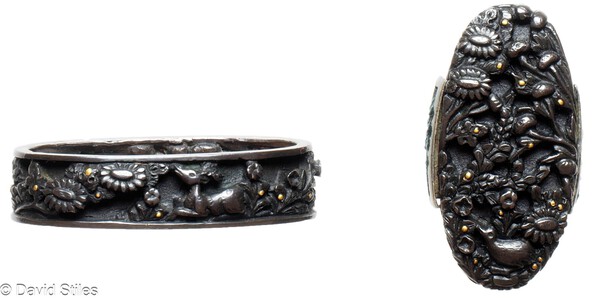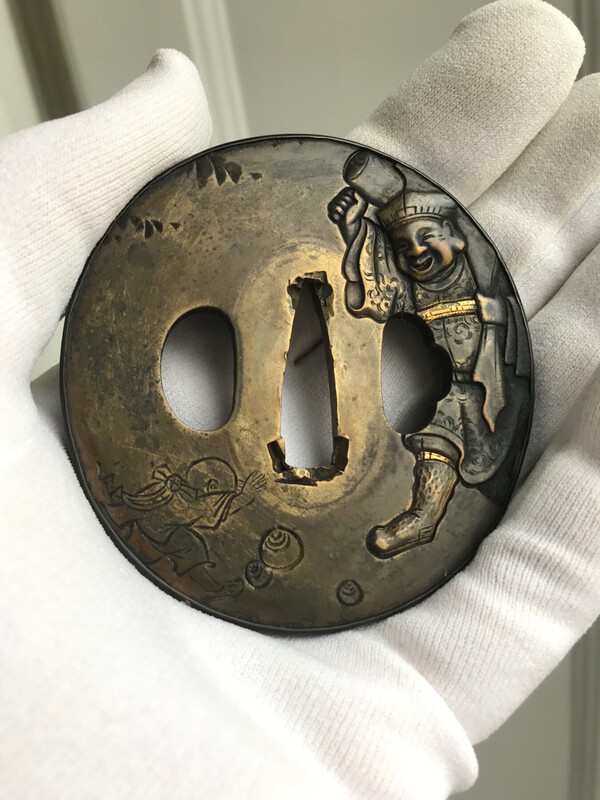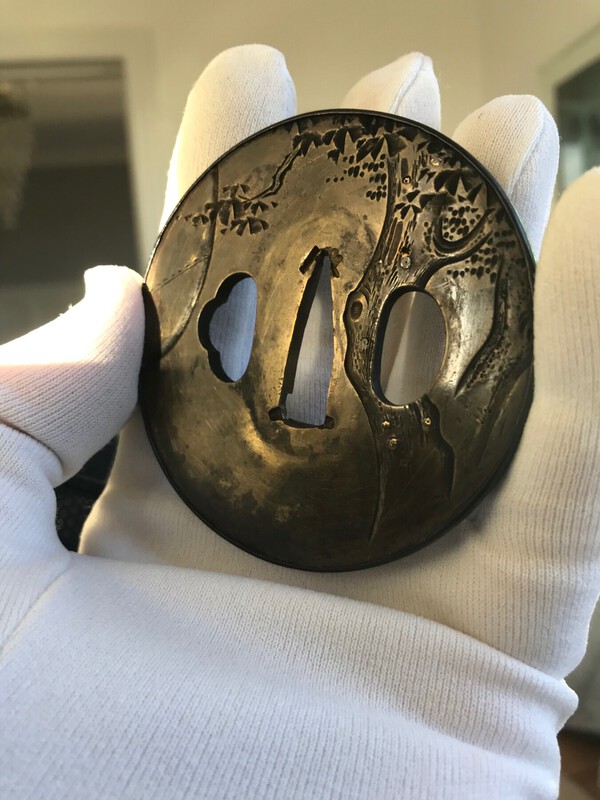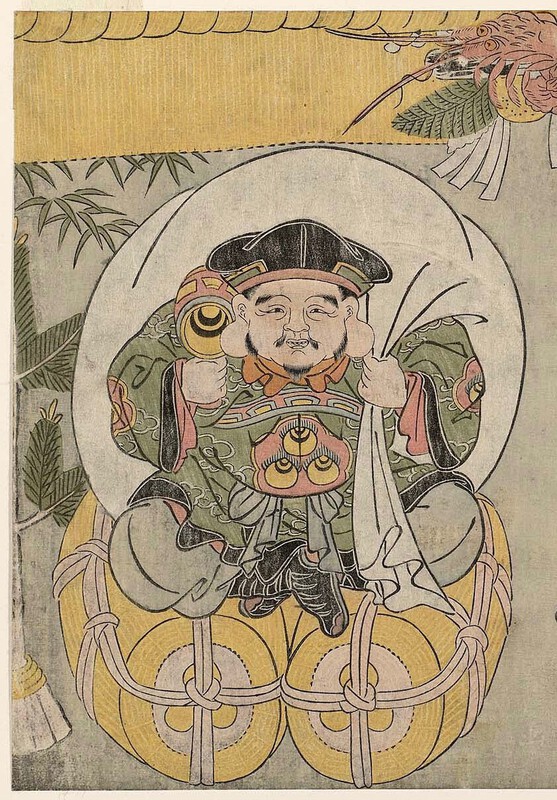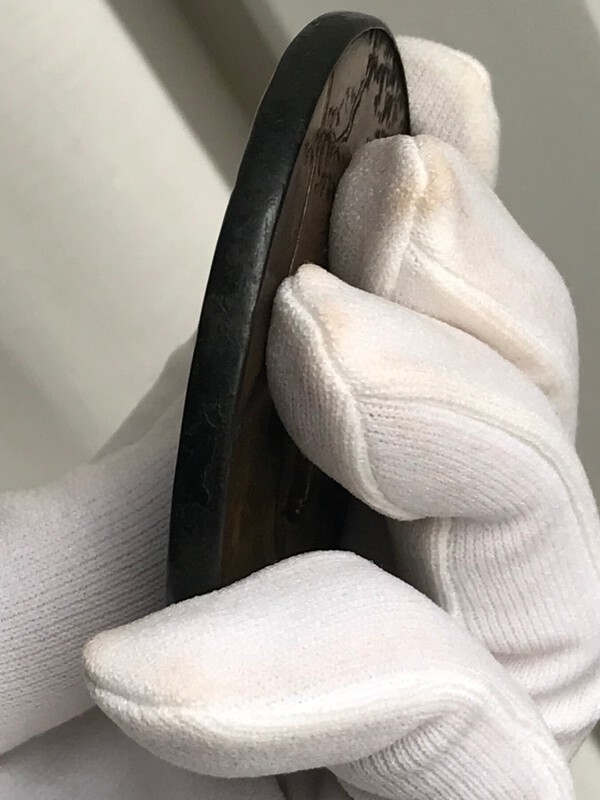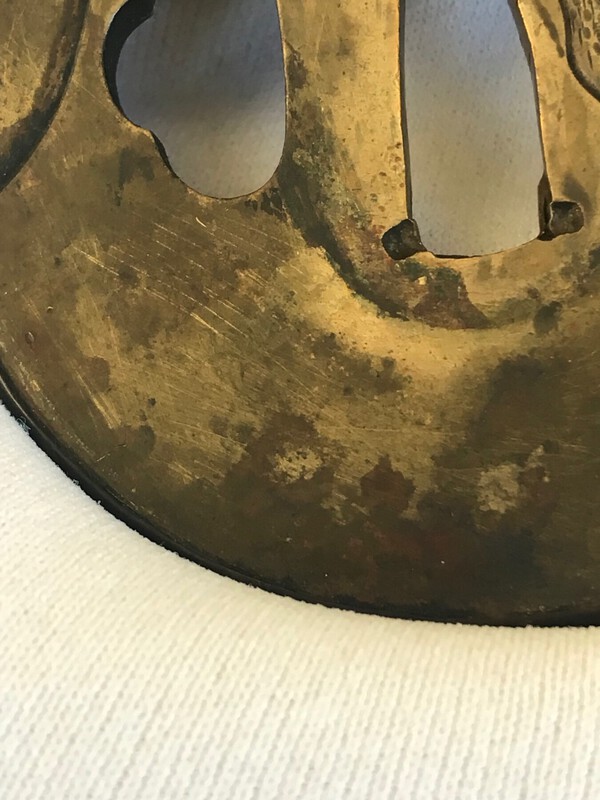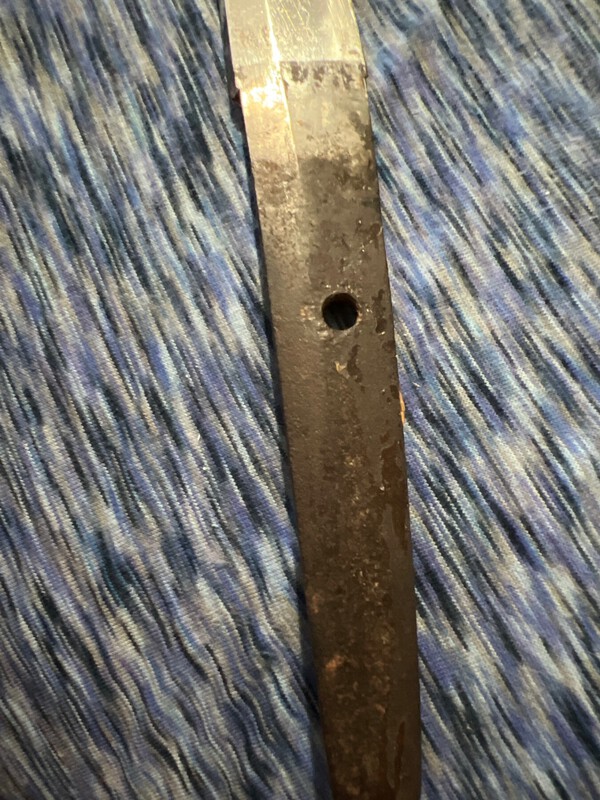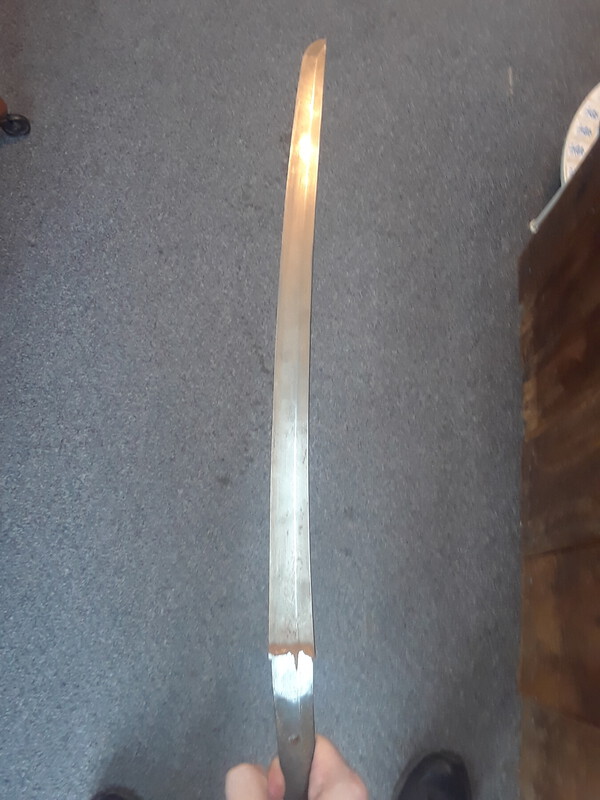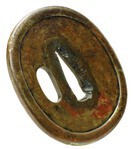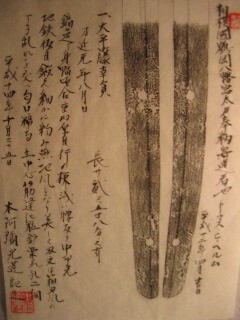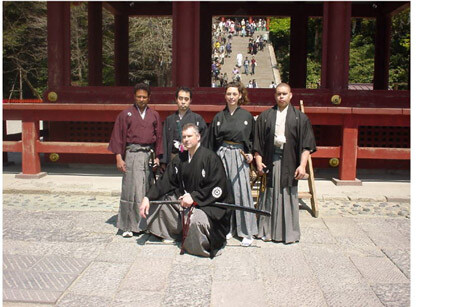Search the Community
Showing results for tags 'restoration'.
-
I am trying to date this blade. I can't figure out which Kuniyuki made it. I am also trying to figure out if it is worth the money to do a full polish and mount. Please help. I am new on here so bare with me.
-
Hi, About a year ago, I started the restoration of the koshirae of a nihonto I bought. The blade the original koshirae was mounted on is nothing special. The price of a polish would exceed the price it would be worth afterwards. Same with a new koshirae. But it was the first...
- 4 replies
-
- 6
-

-

-

-
- koshirae
- restoration
-
(and 1 more)
Tagged with:
-
I recently acquired a Kai Gunto for about 400. The blade is in excellent shape however the Tsuka is in very rough shape and if it was possible to restore it or any professionals that provided such a service.
-
Hi, I bought a Nihonto last year which had a split saya and broken tsuka. The pictures below are how the state was when I bought the sword. I first built a new tsuka from scratch. By the way, I am no woodworker, and this was my first real woodworking project. Later I build a new...
-
Recently at the advice of a friend with shared interest in the preservation of nihonto, I’ve tried and now implemented the use of 99% isopropyl alcohol in my sword care regimen. I’ve used it, rather than uchiko or anything so abrasive, to remove old oil at the start of a cleaning or before...
- 25 replies
-
- 4
-

-
Hi, I am still new to this forum but i want to share with everyone a unique piece, that is my absolute favorite among our vast collection, from the military history institute museum I work at as restorer/conservator. As the title, possibly somewhat confuzingly states, It is a amalgamation of a Japan...
- 16 replies
-
- 17
-

-

-
Maybe someone here on the forum can help me with identifying this Kao mark or the maker on this particular Tsuba that I have recently added to my collection. YES its a little rough and it could do with being restored as the silver has some major wear to it is some places. The...
-
- 3
-

-
- restoration
- tsuba
-
(and 1 more)
Tagged with:
-
Hi there, Ive got a fairly low quality Wakizashi that until recently had a pretty good shine, I probably should have oiled it, but now all of a sudden one side has gone fairly rusty. The sword is not worth enough to get a proper polish, is there any other way, or a guide to remove this surfac...
- 3 replies
-
- 1
-

-
- wakizashi
- restoration
-
(and 1 more)
Tagged with:
-
I have these weird circular spots appearing on my blade. they are only visible if the blade is bone dry. when i apply oil, they are invisible. originally i thought those are spots with dried oil, but nothing i did could remove them, now im a bit worried. what could these spots be? they app...
-
I bought this 1944 Gendaito from a friend in Tokyo, and I'm hoping to have a new tsuka refit. I bought this sword for formal tameshigiri, however, the tsuka is loose and cracked in a few places. Additionally, I'm not a fan of its black, lacquered tsukaito or the Gunto Kashira. I was wondering if a...
- 11 replies
-
- katana
- restoration
-
(and 1 more)
Tagged with:
-
Hello all, I'm back with an update on a wakizashi I acquired a few years ago. I started a thread that can be seen here: to ask about the origins and authenticity of this wakizashi blade. Since then, I have had the blade polished and a shira saya made for it, and i'm basically wondering if an...
-
Hi all. New to the forum and to collecting Japanese Swords. A few months ago I bought a Wakishabi which is in a reasonable state of polish but could do with some attention. This weekend I added to my collection a Tanto which was terribly rusty and had been badly scratched with what I assume to ha...
- 11 replies
-
-
Hello, I recently uploaded a photo of my kozuka blade that I bought from a flea market, but obviously no one could give information with only one photo. So now I’m uploading better photos. There is a writing on the blade which I can’t read as well. My questions are: when was it made? By whom?...
- 2 replies
-
- 1
-

-
- kozuka
- restoration
-
(and 1 more)
Tagged with:
-
I just wanted to start this new topic about the polishing of my Kanemoto Katana, which has been in the works for over a year. I just received an update from the polisher. The dark spots in the ji and ha have been cleaned, as well as the rust specks on the mune (see before restoration photo below). H...
-
Here is a before and after picture of a Katana sized Ko-Mino Fuchi-gashira (古美濃縁頭) set that underwent professional restorative cleaning. Most of the arduous work was done on the kashira. The set turned out very well in my opinion. The set is hard to photograph in detail because the height difference...
-
Dear NMB fellowship, Once again I hope to draw knowledge from your experience and expertise. In my little quest to get wiser on the subject of Tsuba I have found my self buying different kinds of Tsuba (e.g regarding base materials, design and schools). This time I found a much used bras...
-
Bought this the other day thinking it might be cool to restore. The tang looks to have been cut down at some point and has no signature. Scabbard looks like a shin gunto combat cover, but I'm new to this and I could be completely wrong. If it is what tsuba and tsuka would be correct?
-
Hey! This is my first Nihonto I got from eBay for 100$. Was hoping to maybe get any info on it anyone may know like how old the blade is. Also wanted to ask if the crack in the blade would be consider “unrestorable” if I sent it to a professional. Thanks in advanced!
-
What do you do with the leather field scabbard that’s falling apart due to old age ?
-
Hey guys, I've got a wakizashi of a friend here. He is curious about whether or not it makes sense to have restored. I told him it largely depends on the signature. The signature looks confidently written, but that could mean nothing. The blade has a clipped/snapped tip, but it appears t...
- 11 replies
-
- wakizashi
- restoration
-
(and 1 more)
Tagged with:
-
Posted across several threads due to size limits....please see my profile for the rest.... As promised I'm sharing an overview of our small collection of nihonto. We're a small volunteer run museum in NZ. We don't know a ton about this collection and due to many factors much of the paper...
- 10 replies
-
Posted across several threads due to size limits....please see my profile for the rest.... As promised I'm sharing an overview of our small collection of nihonto. We're a small volunteer run museum in NZ. We don't know a ton about this collection and due to many factors much of the paper...
- 22 replies
-
- 2
-

-
- restoration
- wakizashi
-
(and 1 more)
Tagged with:
-
A Gift to Hachiman・or how NOT to conserve a sword “TSURUGAOKA HACHIMANGU ; Famous temple located at Kamakura, dedicated to the god of war-in 1103 Minamoto Yoriyoshi had erected a temple on Yui-ga-Hama, dedicated to Hachiman, the titular god of his family. Yoritomo transported it (1193) t...
- 7 replies
-
- 6
-

-

-
- katana
- restoration
-
(and 1 more)
Tagged with:





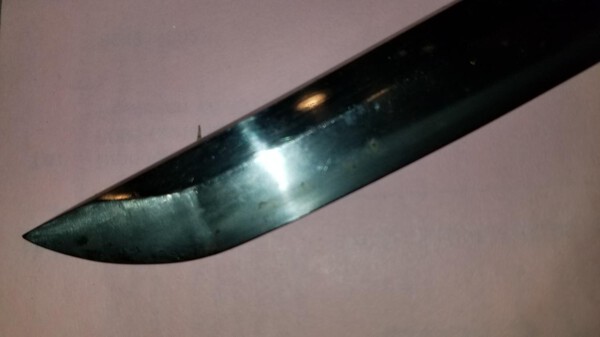
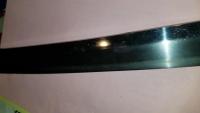







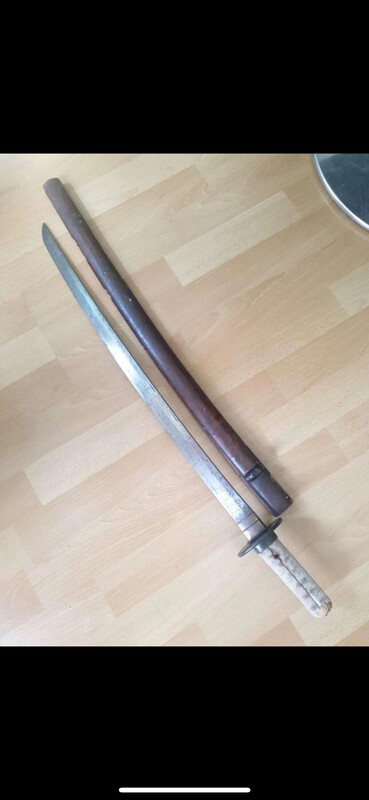






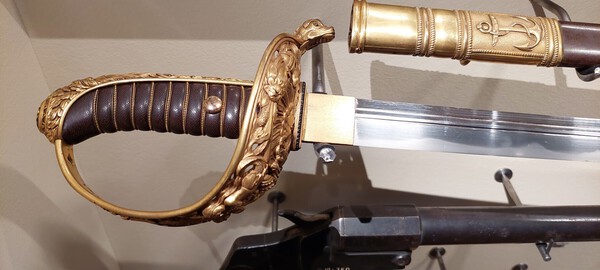


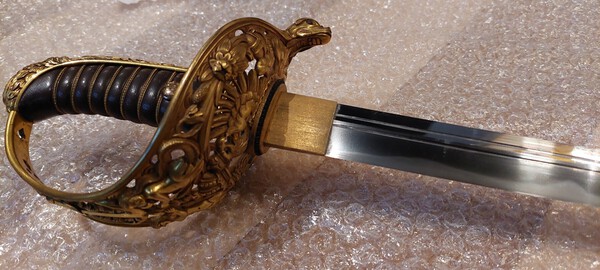









.thumb.jpg.4e89e37cc492793f18c75e4d49f4b453.jpg)
.thumb.jpg.979416a3bbcd93a36c357ae60538492f.jpg)
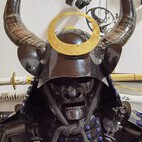

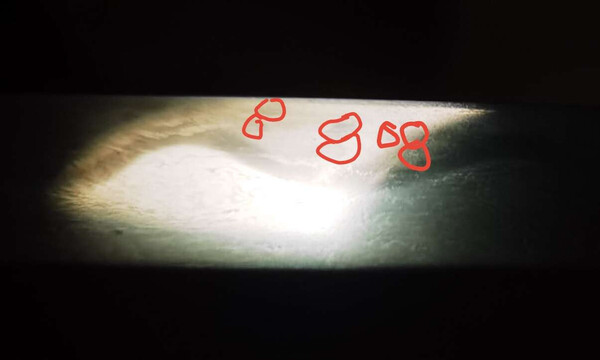

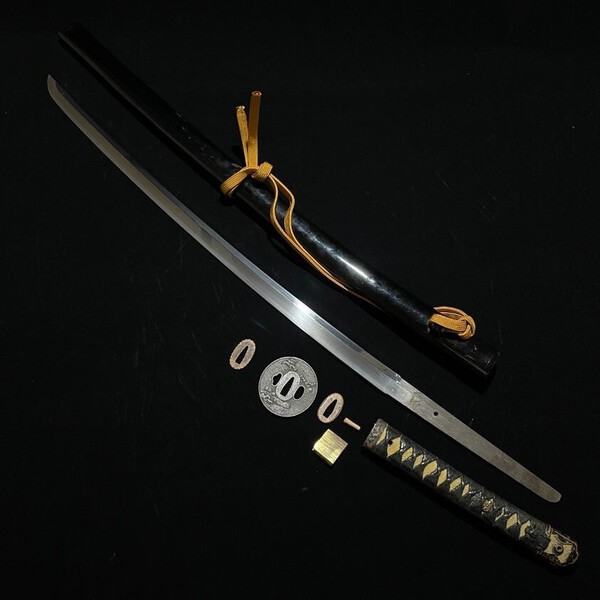

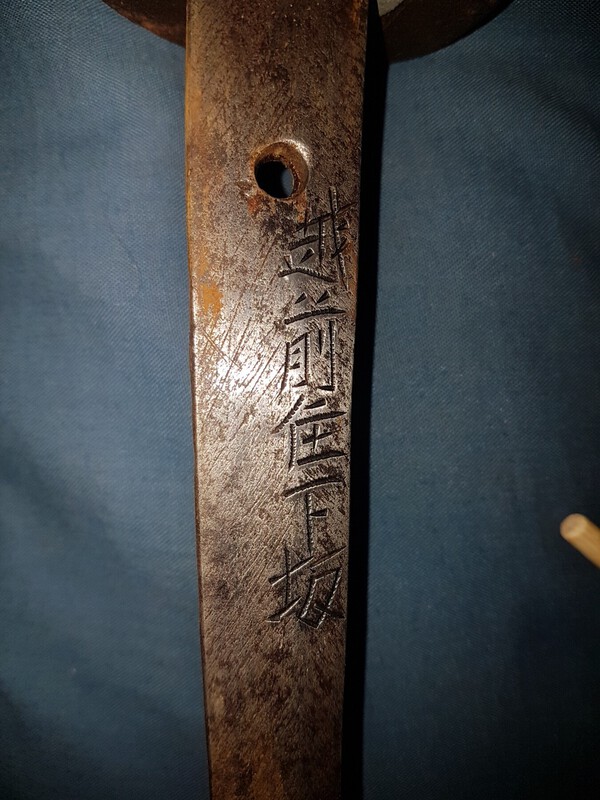




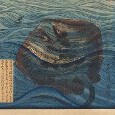




.thumb.jpg.1aa821fb2677d81d007730ce766a475e.jpg)
.thumb.jpg.3d352ef56fa160e6847cd2f06feb05e5.jpg)

